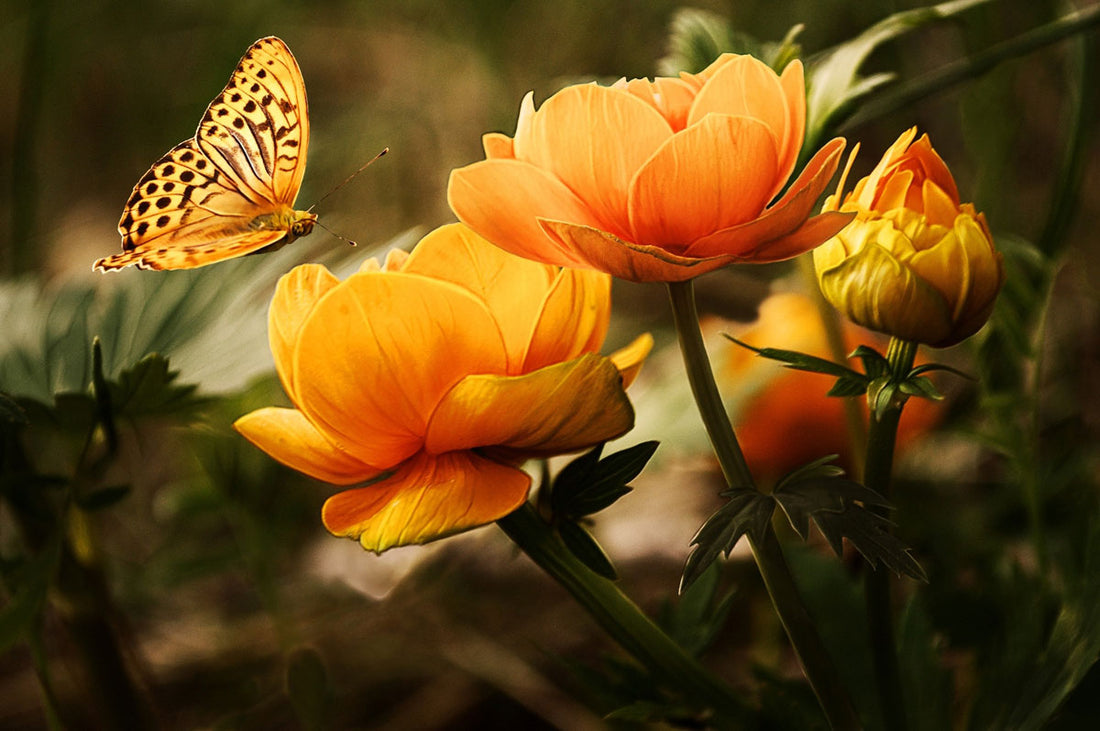Butterflies have long been associated with beauty, transformation, and new beginnings. In recent years, many people have also begun to explore the potential spiritual meaning of butterflies, particularly in the context of the Bible and Christian tradition. The butterfly has become a popular symbol in Christian art and literature, representing the themes of resurrection and new life. In this blog post, we will explore the question of whether butterflies have a spiritual meaning in the Bible, and examine the various interpretations and symbolism associated with this intriguing creature.
Butterflies in the Bible
The Bible contains two references to butterflies, both found in the Old Testament. The first reference is found in Psalm 78:39, which reads: "He remembered that they were but flesh, a passing breeze that does not return." In some translations, the Hebrew word used here is translated as "butterfly" rather than "passing breeze."
The second reference is found in Job 27:18, which reads: "He builds his house like a moth, like a booth that a watchman makes." In some translations, the Hebrew word used here is translated as "butterfly" rather than "moth."
These references to butterflies in the Bible are relatively brief and obscure, and their precise meaning is not entirely clear. However, some scholars and theologians have offered interpretations of these passages that emphasize the symbolism of transformation and impermanence.
In Psalm 78:39, for example, the comparison of humans to passing breezes or butterflies suggests the fleeting nature of life and the importance of living in the moment. In Job 27:18, the comparison of a house or booth to a butterfly or moth suggests the impermanence of earthly possessions and the importance of focusing on spiritual values. Overall, these references to butterflies in the Bible offer intriguing hints at the potential spiritual significance of this creature.
Butterflies in Christian Tradition
In Christian tradition, butterflies are often associated with resurrection and new life. This symbolism stems from the butterfly's transformation from a caterpillar into a butterfly, which mirrors the process of death and rebirth. As such, the butterfly has become a powerful symbol of hope and renewal, particularly in the context of the Easter story.
In Christian art and literature, butterflies are often depicted alongside images of Jesus and the resurrection. For example, in early Christian art, the butterfly was sometimes shown hovering near the figure of Christ on the cross, symbolizing his impending resurrection. In later art, the butterfly was often used as a symbol of the resurrection itself, with depictions of butterflies emerging from the tomb or fluttering around the risen Christ.
The connection between butterflies and the Easter story is also evident in the tradition of using butterflies as decorations during the Easter season. Butterflies are often included in Easter displays and decorations, alongside other symbols of spring and new life. By using this symbol, Christians can connect with the themes of hope and rebirth that are central to the Easter story.
Overall, the butterfly has become an important symbol in Christian tradition, representing the themes of resurrection, new life, and transformation. By embracing this symbolism, Christians can deepen their connection to the Easter story and find hope and inspiration in the butterfly's message of renewal.
Butterflies in Other Religious and Cultural Traditions
Butterflies are not only significant in Christian tradition, but also in many other religious and cultural traditions around the world. For example, in ancient Greek mythology, the butterfly was associated with the goddess Psyche, who was often depicted with butterfly wings. The butterfly was seen as a symbol of the soul and its transformation, much like in Christian tradition.
In Native American spirituality, the butterfly is also seen as a symbol of transformation and change. Many Native American tribes view the butterfly as a powerful spirit animal that can guide humans through life's transitions. The Navajo, for example, use the butterfly in healing ceremonies to symbolize transformation and the ability to adapt to change.
Despite the differences in cultural and religious context, there are many similarities in the ways that butterflies are interpreted and valued. Across cultures, the butterfly is often seen as a symbol of transformation, renewal, and spiritual growth. Whether in Christian tradition, ancient Greek mythology, or Native American spirituality, the butterfly represents the idea that change and transformation can be sources of beauty and growth.
Overall, the significance of butterflies in other religious and cultural traditions serves to highlight the universality of their symbolism and the ways in which this beautiful creature can inspire and uplift people across the world.
Conclusion
In this blog post, we've explored the potential spiritual significance of butterflies in the Bible and Christian tradition. We discussed the two references to butterflies in the Bible, as well as the symbolism of butterflies in Christian art and literature, particularly in connection with the Easter story. We also examined the role of butterflies in other religious and cultural traditions, highlighting the universal appeal of this creature as a symbol of transformation and renewal.
Whether you interpret the butterfly as a symbol of the soul's transformation, as in ancient Greek mythology, or as a spirit animal that guides us through life's transitions, as in Native American spirituality, the butterfly can be a powerful symbol that inspires and uplifts us. As Christians, we can also find meaning in the butterfly's symbolism of resurrection and new life, particularly during the Easter season.
If you are interested in incorporating the butterfly symbol into your own spiritual practice, there are many ways to do so. You could create a butterfly-themed art project or decoration, meditate on the butterfly's symbolism, or simply spend time in nature observing and appreciating these beautiful creatures. Whatever your approach, embracing the butterfly's message of transformation and renewal can help you deepen your connection to the divine and find hope and inspiration in the beauty of the natural world.

